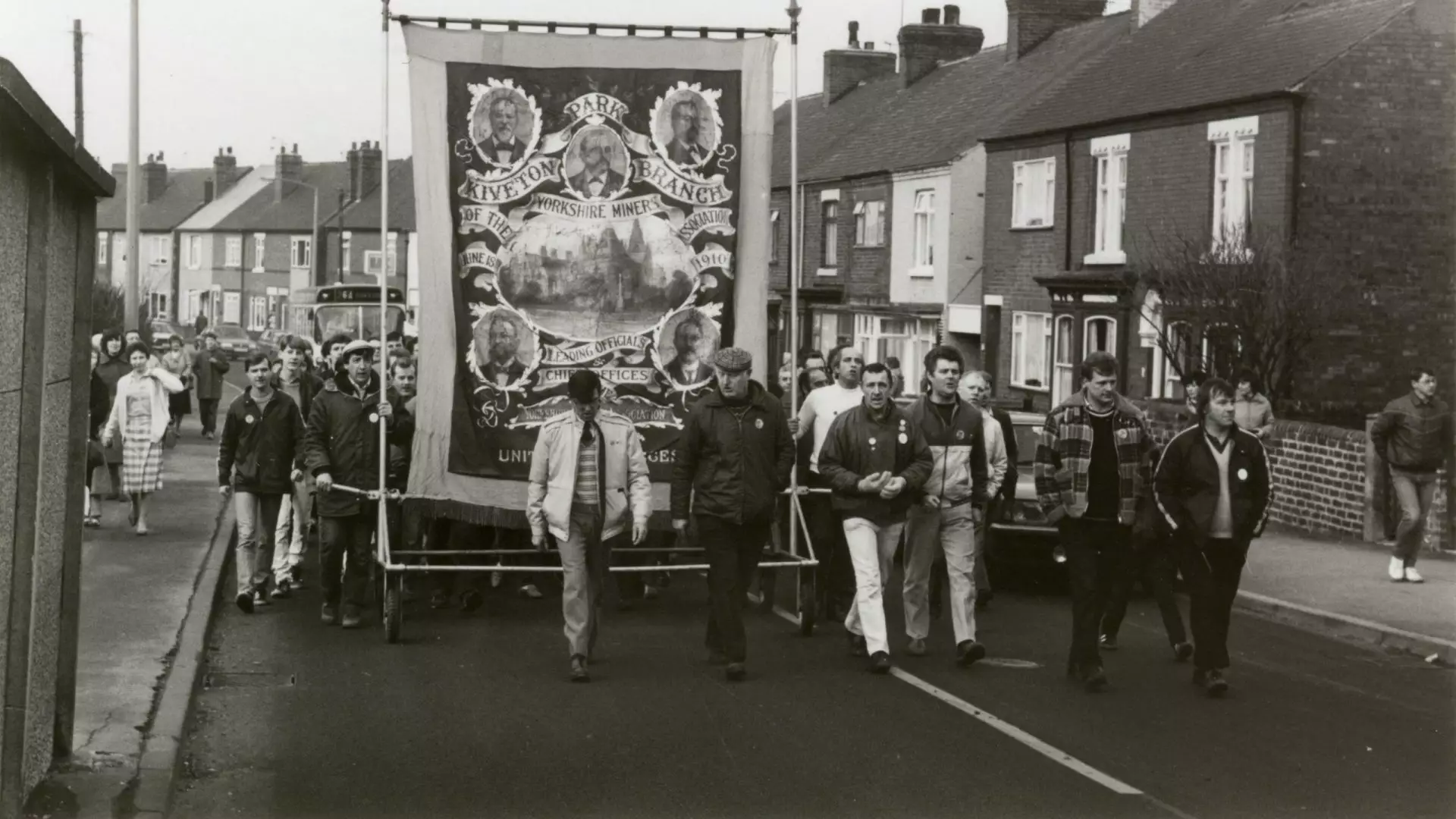Voices in the Coalshed: Banners

The word ‘banner’ derives from the Latin ‘bandum’ meaning a cloth out of which a flag is made. Banners have been used throughout history to identify and represent various groups of people.
Trade union banners have been used in Britain for many years and hold a significant place in mining heritage. In the mining industry, different collieries had their own mottoes and logos. On gala days, they took pride of place in marches, adding a physical presence behind which a community would rally to enjoy the eagerly awaited atmosphere of a day out!
Banners were often preceded by a brass band, their members being miners who took solace through musical camaraderie. The banner was a visible presence at gala days and marches, encouraging unity and strength within a community.
The images and slogans often depicted social concerns, cultural issues or political allegiances. The main themes of banners were often centred around comradeship, welfare and a voice for social justice, a popular slogan being ‘United we stand for union and strength’.
However, the banner became more than just an icon. It began to evoke a sense of belonging, of pride, of the value of tradition: a symbol of the community spirit. When asked what does the banner mean to you, someone said, “(We) want proper history, peoples’ history, the truth, we have to help keep it alive and no one will tell them what it’s about and how it’s changed.”
Written by Volunteer Lesley
Image Header: Les Smith